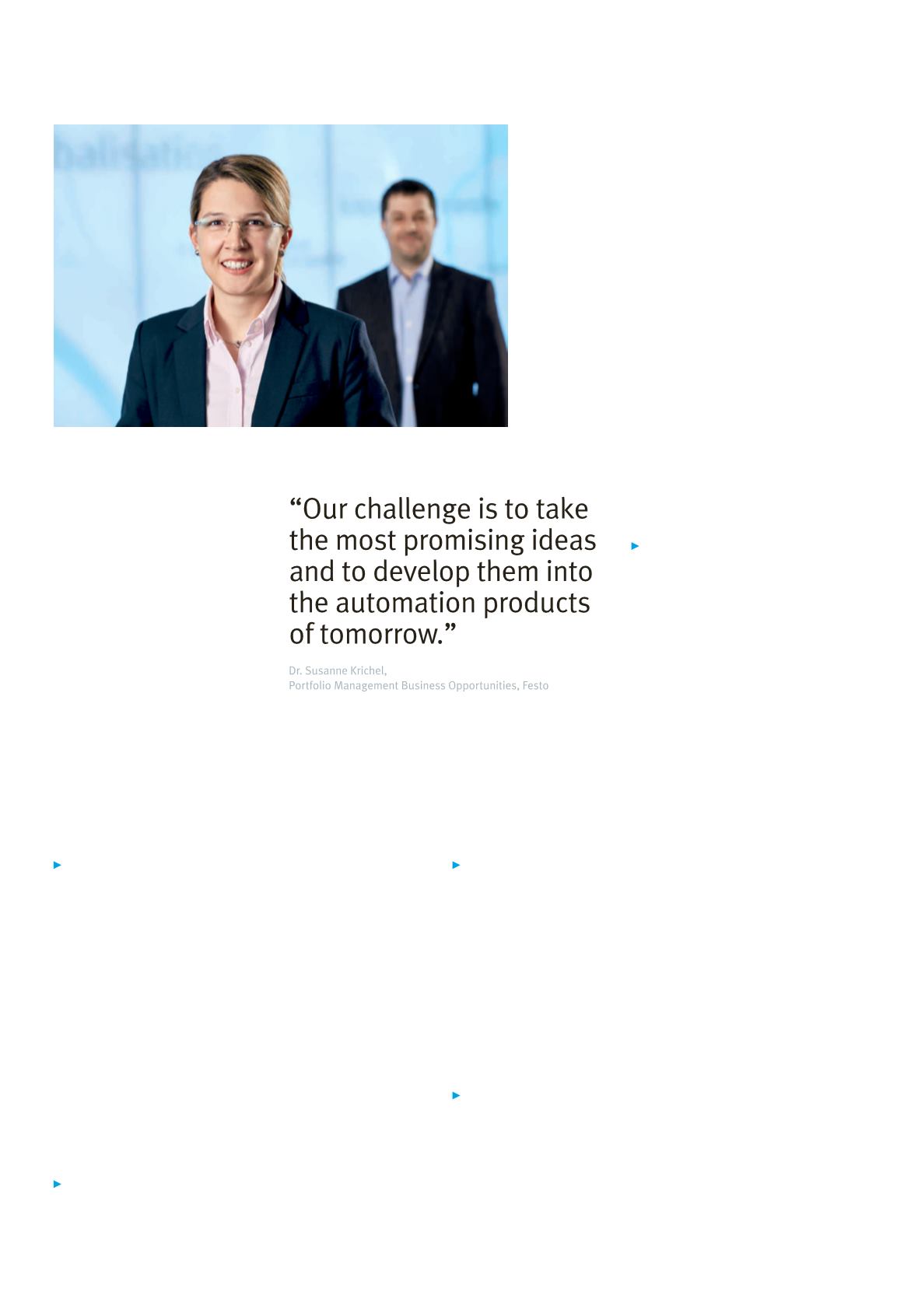

Krichel:
The exhibits demonstrate
very realistically how the effect of a
superconductor magnet
combination can be used in
various applications. However, we
are still some way off from the
technology being used in industry.
At the end of the day, our
customers want reproducible data
and reliable components and
modules. We are therefore
currently working out the
fundamental relationships of this
technology and using them to
create system models. Although
we are still at a very early stage in
the product development process, we are already engaged in
detailed discussions with pilot customers about applications in
current and future generations of systems. This will help us to
assess market potential and to develop our technology
accordingly.
trends in automation
: What are the possible application areas
for this technology? What potential does Festo see in
superconductivity for automation technology?
Krichel:
There are both advantages and disadvantages to using
a completely new technology. Right now, it is difficult to predict
with complete accuracy what applications will develop – it varies
significantly depending on the industry. Having said that, the
technology has opened up a whole new world of possibilities,
and it is exciting to be involved in working out the requirements
and a possible product portfolio. In the biotechnology/
pharmaceutical or food industries, for example, handling
systems that can intervene in processes without any abrasion or
contact would be of enormous benefit. In other areas, complete
electrical insulation is very exciting, while the frictionless and
therefore low-energy transport of heavy loads would be useful in
traditional machine building.
trends in automation
: How are you dealing with these challen
ges and what do you see as the key task in the development of
superconductor technology?
Schauz:
In addition to getting to grips with the
actual SupraMotion technology – which is a
challenge in itself – we have to meet requirements
for industrial use. Because saving magnetic fields
is an area with many as yet unknown applications,
it is important that the basic modules be kept as
multi-functional, compact and efficient as possible
so they can then be joined and combined in
different ways to create function modules with
specific characteristics. We could
use this technology to provide our
customers with linear or rotary
axes with defined characteristics,
for example.
trends in automation
: You are
doing a lot of development in
cooperation with (future) users of
the technology. Why? What input
do you receive from them?
Krichel:
In product development,
focussing on the needs of the
customer is extremely important,
particularly in the case of new
technologies, as it ensures that
the development process is
steered in the right direction from the very beginning. This is
much easier to do with pilot customers, as they provide us, as
developers, with clear guidance and direct feedback on the
progress of the project. This in turn leads to the technologies
being accepted more easily, both internally and externally.
trends in automation
: What are the main challenges when
developing products based on superconductivity?
Schauz:
In automation technology, having control over the
object to be manipulated is crucial. We must therefore be able to
precisely determine and directly influence the levitating state of
objects. In addition to ensuring that the levitating objects are
securely held in place, we also want to supply suitable sensors and
drives. The six possible degrees of freedom of a levitating system
mean that specific parameters become important or must even
be redefined, such as spring stiffness or maintaining a position
during acceleration.
trends in automation
: Is cooling not expensive?
Krichel:
We are often asked this question at trade fairs.
Temperatures in the region of –200 °C may initially sound like they
require a lot of energy consumption. It’s always great to be able to
pleasantly surprise customers, as one of our milestones in recent
years has been the switch from nitrogen-cooled to electrically
cooled cryostats, which can easily be integrated into existing


















